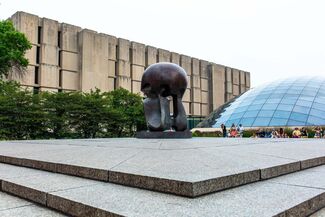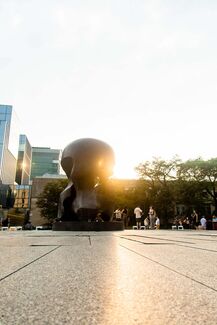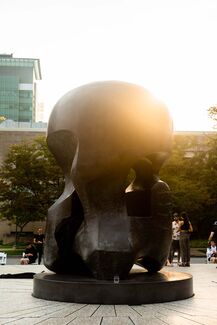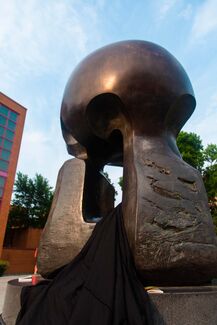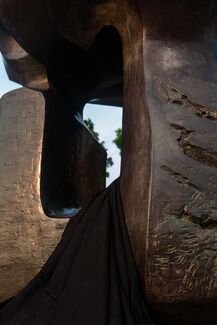
Henry Moore Nuclear Energy Sculpture Plaza
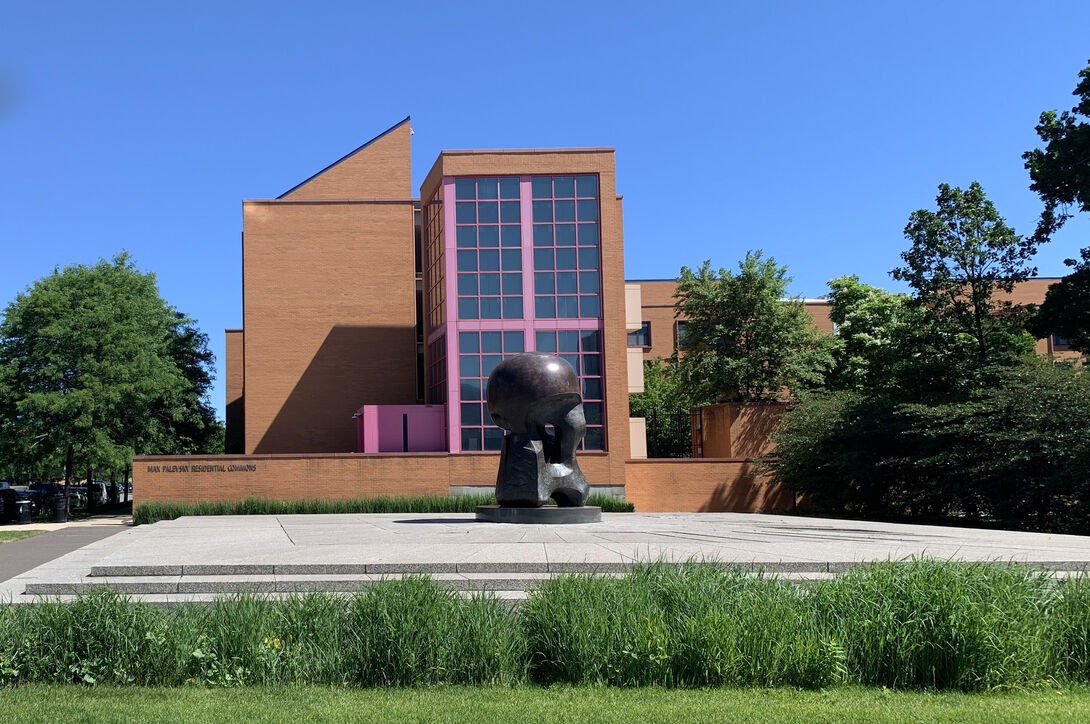
In 1963 Moore was invited by the University of Chicago to make a sculpture commemorating the first controlled nuclear chain reaction, which had been conducted at the university in 1942. Nuclear Energy was unveiled in 1967. This sculpture is a working model for Nuclear Energy. Moore intended it to suggest ‘a contained power and force’ appropriate to the subject. Its shape suggests a human skull and a mushroom cloud.
In August 1945 the first atomic bombs fell on Hiroshima and Nagasaki to devastating effect. Images of the billowing mushroom cloud were soon known the world over. For many, the optimistic attitude toward atomic science which had characterized the years before World War Two was now replaced by fear. Henry Moore joined with others in the public eye to openly take a stance against harnessing the power of nuclear science for warfare.When the Campaign for Nuclear Disarmament (CND) was launched in 1958, Moore was among its founder members.
In 1963, Moore was approached by the University of Chicago to create a monument commemorating the first controlled nuclear chain reaction, achieved there in 1942 by Enrico Fermi. Moore was well aware of the moral and political implications of such a memorial but accepted the commission. He designed Atom Piece, which was later enlarged to 4.3 meters tall, renamed Nuclear Energy, and installed at the University in 1967, exactly twenty-five years after Fermi’s experiment (LH 526).
In a letter to William McNeill of the University of Chicago in 1965 Moore says, “the upper part is connected with the mushroom cloud of a nuclear explosion, but also has the shape and eye sockets of a skull”.
As a celebration of scientific discovery Moore’s work deliberately evokes a sense of the skull not just as death’s head but also as the container of powerful and positive ideas. The domed cranium emerges from a seemingly rocky base of sturdy pillars. An emphasis on scientific achievement rather than atomic warfare was important to the Chicago commissioning committee. The original title given to the work by Moore, Atom Piece, risked mis-interpretation. McNeill stated after the unveiling:
“I know that Henry Moore called it Atom Piece but the local name deliberately chosen – is Nuclear Energy. Atom piece and atom peace seemed too close to be comfortable. I hope you will at least use the local name in addition to or substitute for the name Moore used.”
Description from henry-moore.org
